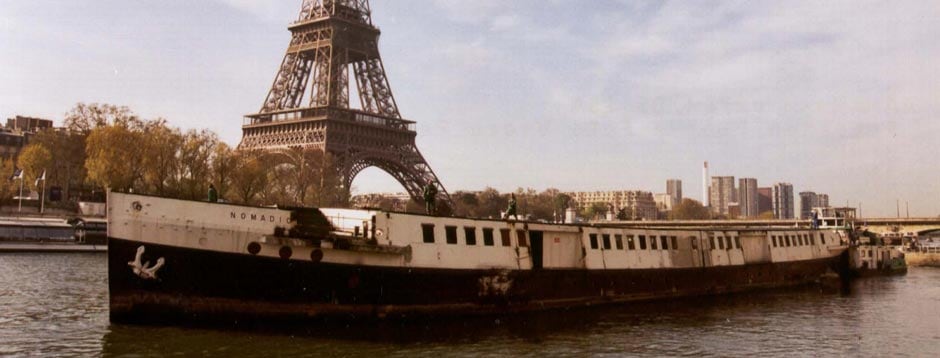1987, on the long drive from Italy after a holiday a gawky teenager begged his long-suffering parents to take a detour via Paris. The object of the harried dash through the gridlocked streets of the French capital? to confirm a rumour that somewhere, a stone's throw from the Eiffel tower, rested the last floating remnant of the White Star Fleet.
"That old tug?" was the understandable reaction of tired parents and sceptical brothers as they stood on the banks of the Seine. Not a mighty ocean liner... not even something that looked very much like a ship. But a rust-streaked, dilapidated and slightly tacky Japanese restaurant.
On that day and on many since I, like numerous others, have speculated and occasionally schemed about what might become of this sad but important relic. At the time, like a pickled film-star, the Nomadic showed all the effects of excessive and careless reconstructive surgery... most of the best bits seems to have been hacked away. But underneath the unflattering make-up were the unmistakable lines of a modest but graceful vessel. Today transplanted to Belfast "that old tug" has a new lease of life and what better time than now to reflect on the past and look forward to a bright future for this remarkable artefact.
Mervyn Pritchard, the Nomadic Preservation Society's Maintenance Officer, has taken on the challenge not only of participating in the monumental task of restoring the Nomadic but also of chronicling the process. The Belfast Child is a lovingly produced work on behalf of the society to raise awareness and funds for the ongoing preservation of what they term the "last great link with Titanic."
The book begins with the inevitable historical recap placing Nomadic in her Titanic context but this is kept thankfully brief and we move briskly on to the details for the Nomadic's long and eventful career. But this time the history seems needlessly brief. Details of her war service are skimmed over and despite the fact that she served the 'Queens' until 1968 there are no details, pictures or anecdotes to speak of. The Traffic, her sister ship, receives barely a mention.
Such omissions are, however, more than made up for by the wonderful feeling of being conveyed on a personal journey through the old ship, told with good humour and supported by some outstanding photographs. Insulating dust and face masks never looked so artistic.
The author expresses his hope that matching steam engines can be found fitted and the ship to sail again. It is hard to see this happening: changes in fire regulations, hull condition and the sheer cost leave one wondering if this isn't a flight-of-fancy but who knows? As with some veteran aircraft maybe it will one day be put back in taxiing condition at the very least!
All restoration projects face an uphill struggle and, it seems, that maritime projects struggle more than most. We are not good at recognising the assets that lie rusting on our doorstep, witness the decimation of the Harland & Wolff shipyard. But at the same time we should not be overly sentimental or unduly depressed. As Mervyn Pritchard records: Yvon Vincent, the former owner of the Nomadic, so heavily criticised for overseeing the 1970s conversion of Nomadic is a man we should thank for his foresight in saving Nomadic when otherwise she would certainly have been scrapped. No dewy-eyed enthusiast he, but a pragmatic man without whom we would not even be having the debate.
I never got to eat in that Japanese restaurant, and the family never let me forget the stressful diversion but I'm glad I went there and each time I visit Belfast I'll thank Mr. Vincent, and the small but dedicated army of volunteers that are slowly bringing the Nomadic back to life. On the evidence of this book they've got a long way to go, but the progress to date is astonishing.
The Belfast Child: SS Nomadic, Exploring the World's Last Great Link to R.M.S. Titanic is published by the Nomadic Preservation Society.

Comment and discuss